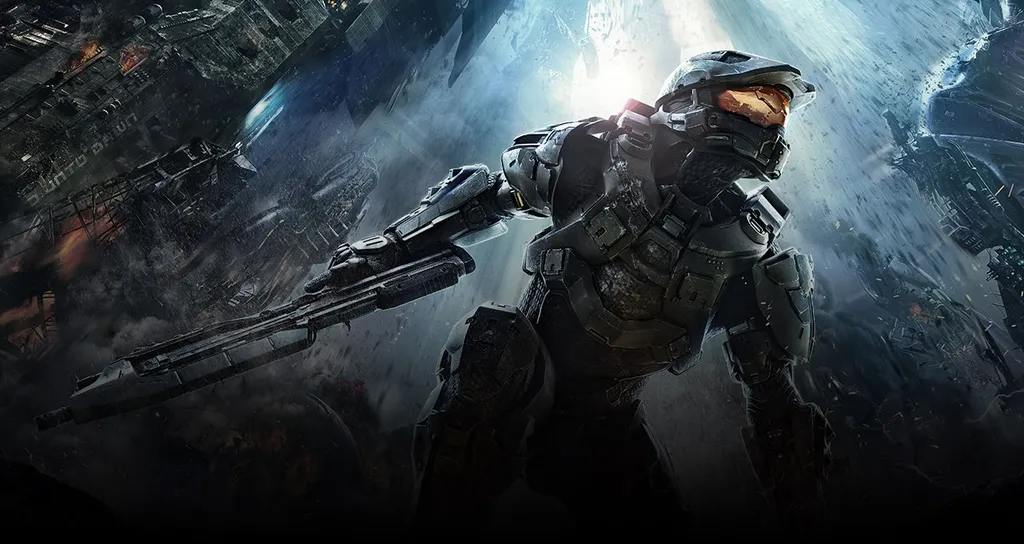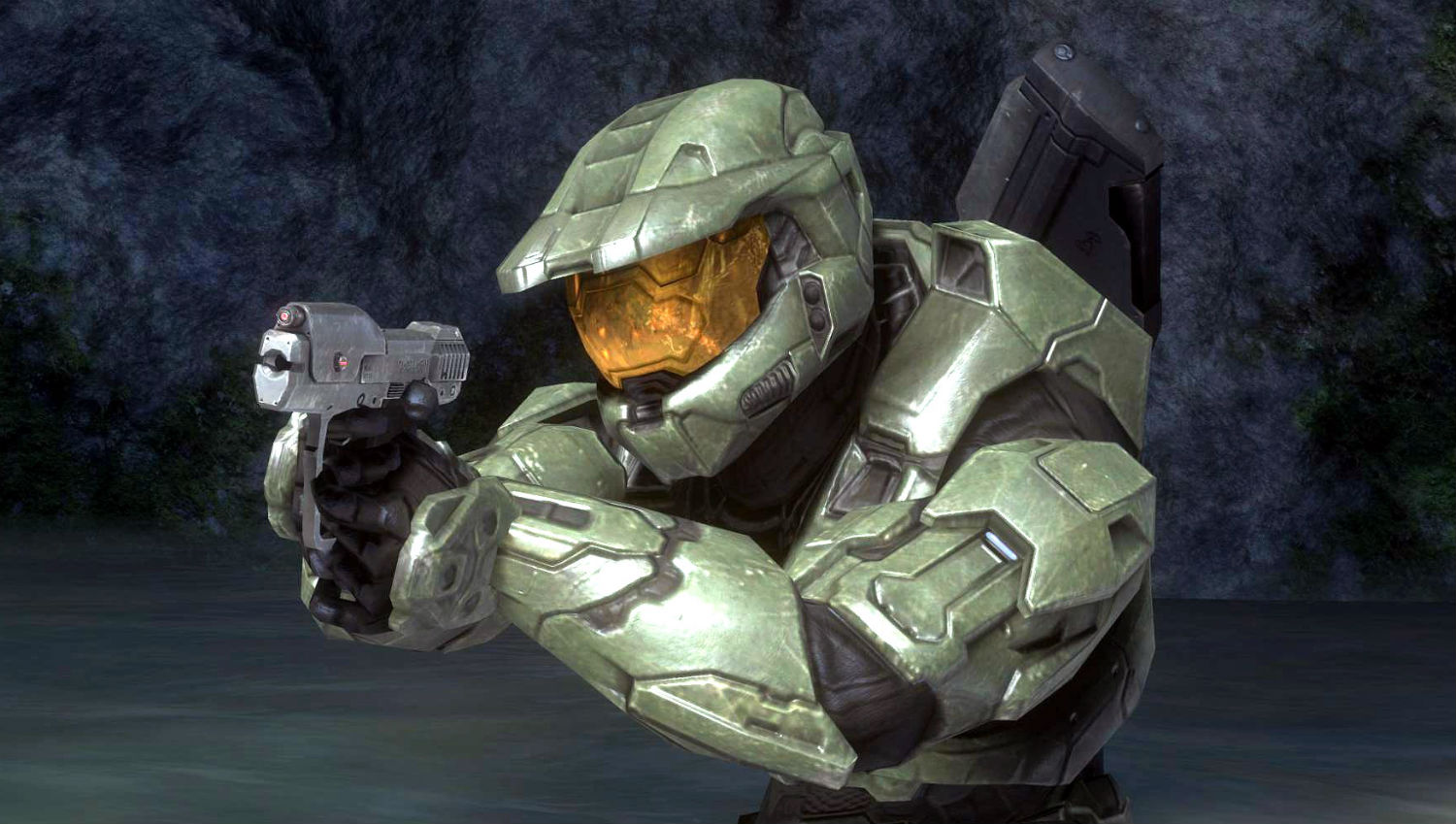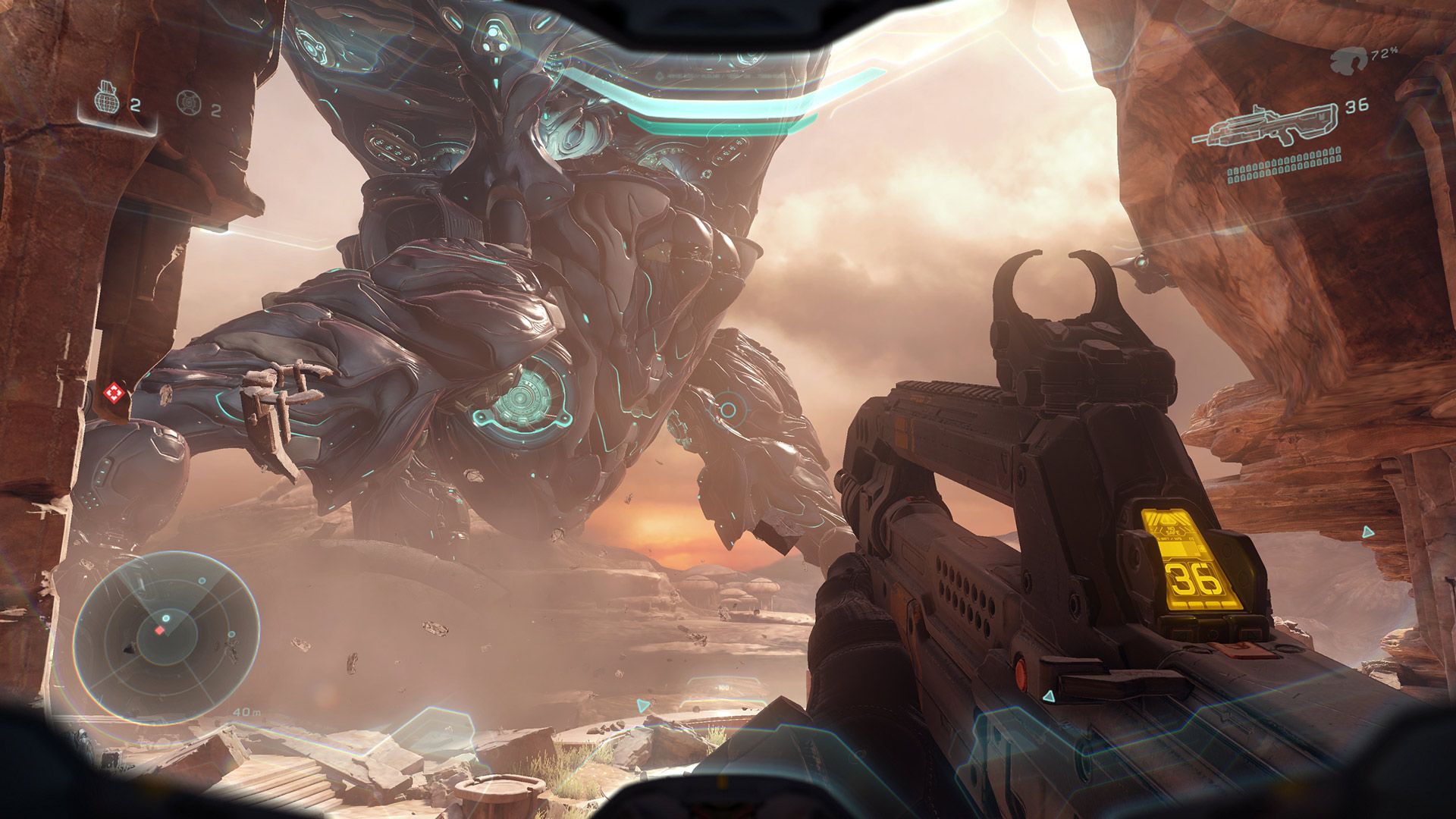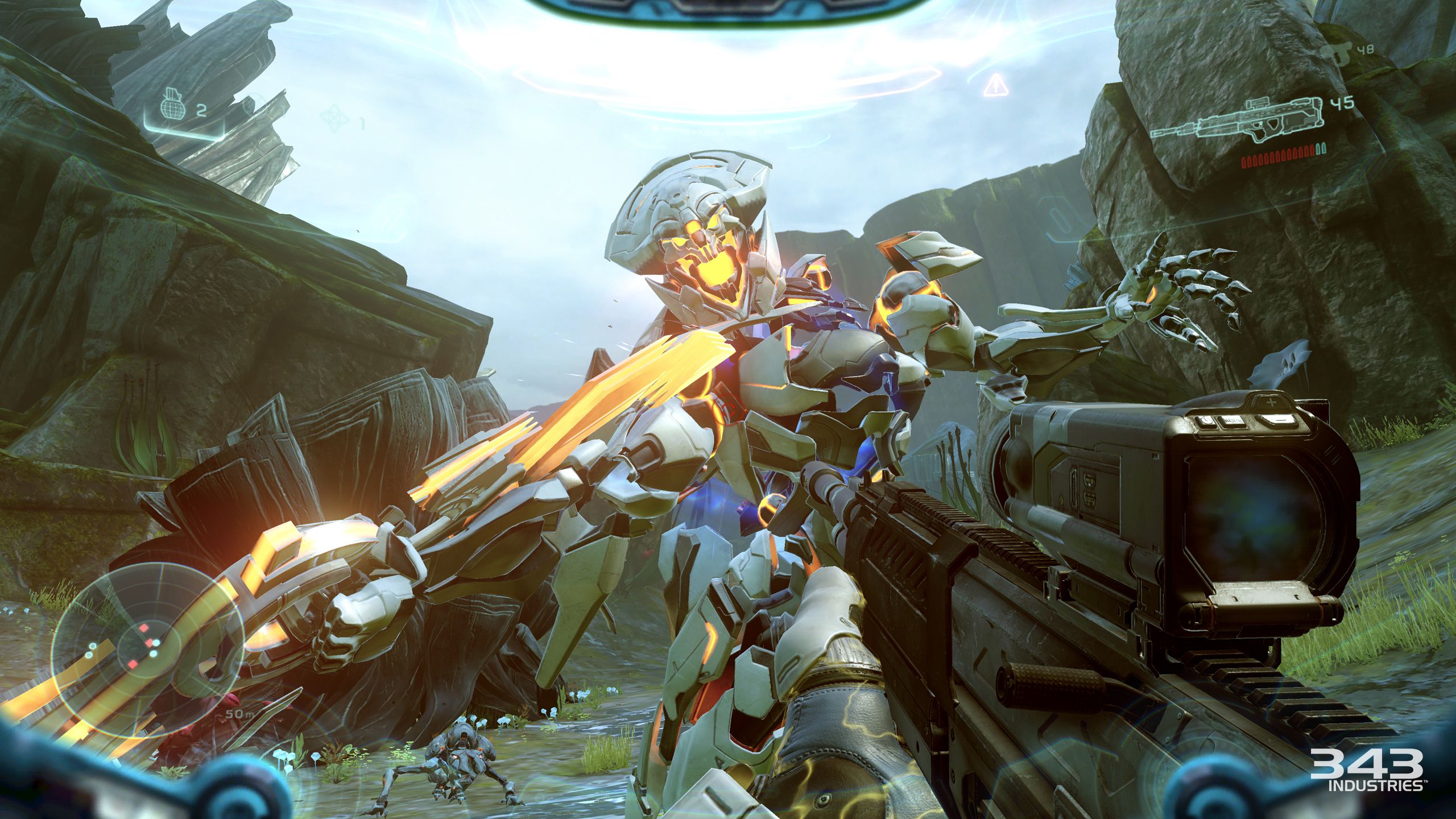People called Lucky’s Tale the Super Mario 64 of VR, but it wasn’t really. It was a great platformer, sure, but it was more like a taster of things to come, not a revelatory milestone that laid the foundation for the next two decades of mainstream gaming. Literally, yes, Lucky’s Tale was similar to the N64 classic, but its significance doesn’t measure up to those lofty standards.
Halo VR, however, could (and should) actually be the Halo of VR.
Confused? Let me explain. Before Halo launched Microsoft’s Xbox all the way back in 2001, there were very few first-person shooters (FPS) that really proved the genre could work on a gamepad and console. Goldeneye and Perfect Dark on the N64 were perhaps the two exceptions to the rule that otherwise left console gamers green with envy as their PC compatriots enjoyed the likes of Half-Life.
But Halo changed all of that.
Bungie’s take on the FPS proved to be the perfect template for one of gaming’s most popular genres on consoles. The pitch perfect dual analog controls and revolutionary concepts such as a recharging health meters set the bar for years to come, and made the franchise and arguably Xbox itself a household name amongst gamers. Its significance in shaping the gaming landscape of today simply can’t be understated.
Nearly a year and a half into high-end VR gaming’s existence and the industry still doesn’t have its Halo (or, yes, even its Mario 64). That’s not to say there aren’t great games; we’ve already listed several this year that any gamer should play and Superhot VR and Lone Echo come close to being killer apps, but we’re undeniably still in search of that essential hallmark. There isn’t a VR game out there yet in which all the stars truly align like they did for Mario or Master Chief, to create something truly historic that will be talked about for decades to come. Many games still struggle with immersion issues, tracking limitations and the dreaded locomotion problem.
Not to put too much pressure on current series developer 343 Industries, but we’re in need of a little Master Chief magic.
If you’re bringing Halo to VR, you have to do it right. That means a game that truly understands what VR is and what to do with its many tools. I want something that feels truly empowering; like I’ve really embodied a legendary soldier capable of overcoming any combat situation. I want to completely forget that I am standing in my bedroom and really believe I’m racing through an alien planet in a Warthog or locking energy swords with an Elite.
That would be something that causes heads to turn and, just like the first Halo sold people on the Xbox, convince gamers that VR is worth the investment. How you actually do that is beyond me, but when you’re playing with one of the biggest brands in gaming you’ve got to have some good answers.
Now, I know I’m getting ahead of myself here. I’m asking for something unrealistic and chances are whatever 343’s building it’s not the next flagship entry in the franchise and much closer to a spin-off game. I fear we’ll ultimately get something that’s more Spartan Assault than Combat Evolved; a fun, forgettable affair that feels like just another VR game with a coat of Spartan paint. Heaven help me if it’s a wave shooter.
This is one franchise that doesn’t need that five-minute taster, it needs the entire menu.
I want Microsoft to pull that off not just for VR’s sake, but also for Halo’s. In the years since Bungie said goodbye to Master Chief and moved on to new pastures, the series has lost its shine a little. 343’s first follow-up, Halo 4, was a noble crowd-pleaser but Halo 5’s campaign left many disappointed. The brand just doesn’t carry the same kind of weight it once did, and new champions like Destiny and Overwatch have taken its place. What better way to bring Halo back into the spotlight by breaking new ground in VR and being the first game to truly convince naysayers of the tech’s power?
I could understand any hesitancy on Microsoft’s part to go all-in, though. At launch especially, Microsoft’s new Windows 10 VR headsets likely won’t garner an install base big enough to recoup a multi-million dollar budget, and the $900 all-in barrier to entry for Windows VR makes a true system seller much harder to achieve. Honoring the legacy of Halo probably doesn’t make good business sense right now, though it will one day.
We need a truly excellent VR Halo game that sets the standards for the medium just as the first entry did for console gaming 16 years ago. We need something that returns the series to its former glory and reclaims the throne as the undisputed king of shooters. Microsoft and 343 have the resources to make that happen; whether they will is another matter entirely.





























